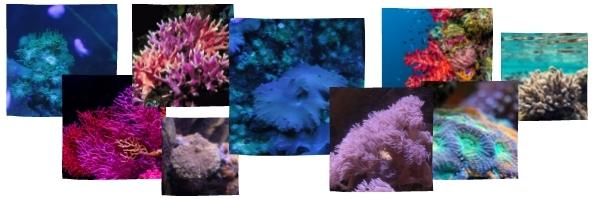
Mutualistic relationship of coral and zooxanthellae.
Most coral has a mutualistic relationship with special algae called zooxanthellae.
Zooxanthellae live inside the coral’s tissue. This protects it from predation and provides them with the nutrients they require for photosynthesis. Photosynthesis produces waste products, such as oxygen, glucose, and amino acids.
Coral uses these waste products to produce carbohydrates, proteins, fats and possibly most important of all calcium carbonate, allowing it to grow.
What is coral bleaching?
Coral Bleaching occurs when coral forces zooxanthellae out from inside it. This turns the coral into a pale white colour. This doesn’t kill it, but it does leave it vulnerable. Without help, they could die within days.
Why are zooxanthellae forced out?
Bleaching occurs for several reasons. The main cause though is climate change. Like so many other crises the world currently faces. Other factors include pollution, overexposure to sunlight and extremely low tides.
Changes in water temperatures, as little as 1 or 2 °C more than usual, can cause huge bleaching events in reefs. Leaving them vulnerable to destruction.
Ocean acidification
Carbon Dioxide (CO2) reacts with seawater to form carbonic acid. The world’s oceans absorb in the region of 30 million tonnes of CO2 every day!
As I previously mentioned, coral use calcium carbonate to grow. Forming what is essentially a limestone skeleton. Seawater is slightly Alkaline, as this changes and becomes acidic the additional hydrogen ions released by the carbonic acid bind to carbonate ions in seawater changing them to bicarbonate. This makes it difficult for corals, and marine life with shells, to grow, as there are fewer carbonate ions available to them.
Why are coral reefs important?
Reefs influence a lot of ecosystems worldwide. The fish and animals that graze on coral over time create large sections of sand. This sand then moves with currents, forming shallows and islands and providing the ideal environment for coastal forests such as mangroves.
They provide jobs and recreational opportunities. Fishing, diving, and snorkeling at reefs can add millions of pounds to a local economy. It’s estimated there are over half a billion people dependent on reefs for food and protection around the world.
Reef ecosystems have also provided medical advancements. Many of the inhabitants of reefs produce chemical compounds that have been used in treatments for all sorts, from cancers, cardiovascular diseases, and ulcers. With such a high density of marine life, there is the potential for so much more we’ve yet to discover.
Coral reefs and biodiversity
Reefs are home to over 25% of all marine life. They’re present in both tropical and cold water but cover less than 0.2% of the world’s oceans. That’s a lot of life packed into a relatively small space!
This alone should demonstrate more than anything the importance of maintaining the world’s reefs!
